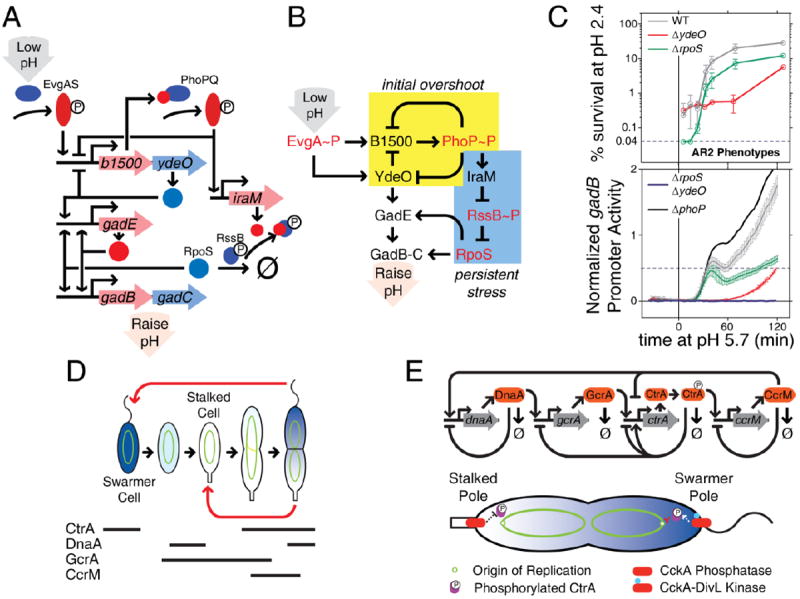Figure 4.

Complex feedback architecture with non-transcriptional interactions enables complex dynamic responses. A. The E. coli AR2 acid response system is a complex network with interleaved transcriptional-post-translational interactions that responds to acid stress on two timescales: initial low pH feeding into the EvgAS two-component system, and upregulation of alternative sigma factor RpoS in response to persistent stress48, 49. B. A circuit diagram reveals a negative feedback architecture for early responses (pre-60 minutes) and a coherent feedforward loop under persistent stress. C. High temporal resolution measurement of promoter kinetics in the AR2 system shows two response phases: a fast, overshooting response from the negative feedback loop, and a persistent high-expression response imparted by the RpoS-Gad feedforward loop49. Losses of dynamical characteristics in systematic deletions show the role of each feedback loop in the emergent AR2 biphasic system response. D. The Caulobacter crescentus cell cycle has evolved to deterministically produce daughter cells at two different developmental stages: a transient swarming cell type that and a mature stalk cell type. Each cell cycle stage has characteristic expression of core genetic circuitry components. E. The core genetic program is a feedback circuit that depends on regulated degradation to attain oscillatory behavior. A spatial gradient of CtrA phosphorylation mediated by polar localization of kinase and phosphatase activities suppresses chromosome replication in the swarmer pole but not in the stalked pole.
